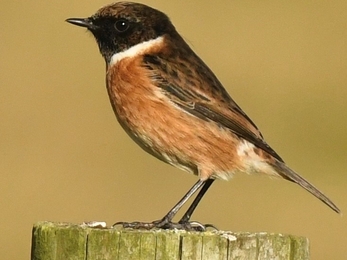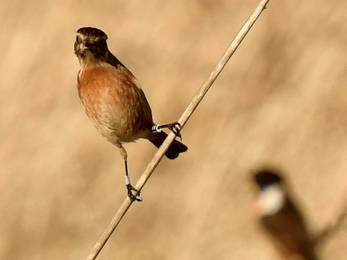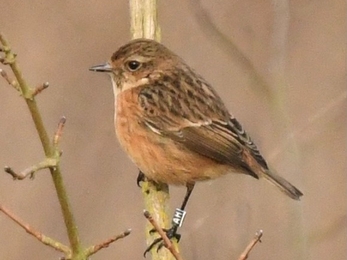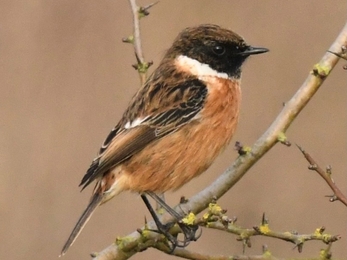The unexpected nature of wildlife is one of the most exciting aspects of working in conservation. As I am currently running a project on colour ringing stonechats at the Great Fen, I am always interested in stonechat records from anywhere in Cambridgeshire, as well as ringed birds in the Great Fen.
So when our Wildlife Trust Promoter, Paul Wyer, reported that he had spotted a female stonechat at Trumpington Meadows, on 1st February, with two rings on its legs, the excitement started to grow. Paul has sent me photographs of stonechats from this reserve on a number of occasions, and we often correspond over wildlife sightings, especially the stonechats, as they are a bit of a highlight for him; he says, “I always look out for the arrival of these wonderful little birds each autumn. I just love the way they pose, up high on any vegetation or vantage point they can find. They’re a great photo opportunity, especially as they sit still for a second or two!”
This time, the bird had a metal ring on one leg, standard adornment as a result of being ringed, but it also had been “accessorised” with a colour ring. As it only had one colour ring, it was not one of the birds ringed at the Great Fen (which have one on both legs), so where had it come from?







